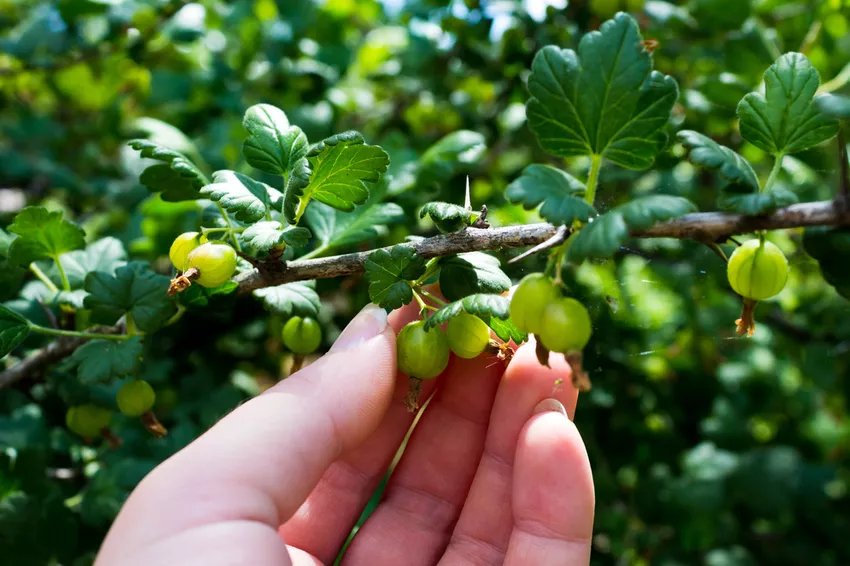The fruity and spherical fruits of the gooseberry are not only deliciously refreshing, but also healthy. With the right combination of varieties, you increase yields and extend the harvest window, because the shrubs bear fruit from summer to autumn.
 The gooseberry season starts in May/June
The gooseberry season starts in May/June
When the varieties bear
The varieties have a wide range of colors. This ranges from whitish green to golden yellow and light brown to red. The shell is smooth or has bristly hairs and can be soft or firm. The main domestic season extends from June to July, with some varieties bearing fruit until August or September.
Popular Varieties:
- 'Höning's Earliest': Early variety whose yellow berries are harvested from the end of June
- 'Spine Free': almost thornless variety with large red fruits ready to be harvested in mid-July
- 'Hinnomaeki red': little spined variety with yields from mid to late June
- 'Invicta': shrub with many thorns, bearing yellow-green fruits in mid-July
- 'larell': full red and thornless variety with mid-late to late harvest time
This is how gooseberries thrive
Like all Ribes species, this shrub grows in a loose soil with constantly fresh conditions that does not tend to waterlogging. The trees prefer a loamy substrate. Gooseberries get along well with calcareous substrates. A sunny to partially shaded and well-ventilated location offers optimal growth conditions.
planting
Before planting, loosen the soil deeply and dig a hole twice the volume of the root ball. If you plant several shrubs next to each other, make sure they are about 180 centimeters apart. For tall trees, a distance of 1.5 meters to the next plant is sufficient.
maintenance
In addition to regular watering, fertilization is of particular importance. You should avoid both drought and waterlogging as well as over-fertilization. Stone or bone meal and wood ash are just as suitable for soil preparation as algae lime. Compost provides an ideal basis for growth. Give plants manure occasionally during the growing season.
harvest season
There are two ways you can harvest gooseberries. Unripe berries are ideal for further processing. They are harvested green when they have reached a diameter of at least one centimeter. Since they are pressure-resistant, they prove to be easy to store. The further the ripening process progresses, the sweeter the fruit tastes.
Harvest properly
If the tree produces high yields, pluck the branches several times from the end of May when they are immature. As a result, the remaining berries ripen better and grow larger. From June onwards, concentrate on the fully ripe fruits, because not all fruits are ripe at the same time.
freshness test
Fully ripe specimens are fully tinted in their opaque color and are ideal for fresh consumption. The degree of ripeness is easier to recognize in red varieties than in green specimens. The berries are plump when they are at their optimum stage of ripeness and have a firm outer skin.